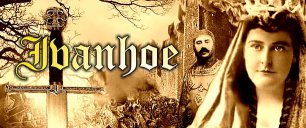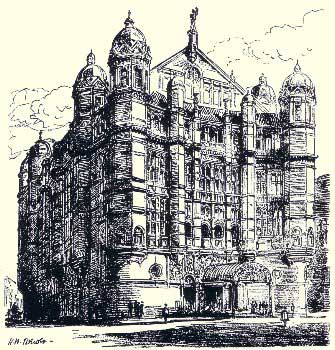 |
|
You are here:
Introduction by Alan Borthwick
It seems quite natural that Arthur Sullivan, the most popular composer of his day, should choose the best-selling novel, Ivanhoe, as the subject for his first full-scale opera. Tired of writing what he considered to be inconsequential works with his famous partner W. S. Gilbert, and with a manager, Richard D'Oyly Carte, ready and willing to build a Royal English Opera House specifically for him, Sullivan revelled in his task and the new opera opened to popular enthusiasm on 31st January 1891. W. S. Gilbert refused Sullivan's offer of two stalls tickets for the first night (he wasn't offered a box - these were reserved for Sullivan's more affluent friends). The opera ran for 155 performances and when D'Oyly Carte had no new English opera ready he merely produced a French one - and ran Sullivan's work in tandem! However, although the opera was a success, the Opera House itself was a failure and in January 1892, one year after the Ivanhoe premier, it closed. It now houses Les Miserables! Since its original run, and a clutch of early revivals (most significantly one conducted by Beecham at Covent Garden in his 1910 season - on the same bill as Richard Strauss' Elektra), the opera has fallen out of favour, as have all the 'serious' English operas written around the same time. Styles and tastes change rapidly and the public simply lost interest in ballad operas or in a romantic, episodic work such as Ivanhoe. With the centenary of Sullivan's death nearly upon us (he died in November 1900), and a major revival of interest in his non-Gilbert works as demonstrated by new CDs of his orchestral and stage music, the time is surely ripe for revivals of one of his most important pieces. Producing this piece for modern audiences is a major challenge. First of all, the opera runs to nearly four hours and it is necessary to drastically reduce its length. Also, it is a historical fact that in 1891 the audience attending the premier all knew Scott's novel intimately. Sullivan and Sturgis relied on this fact and as a result the opera consists of a series of disconnected scenes from the book. If you don't know what happens between the Lists at Ashby and the Passageway at Torquilstone, then the opera will not enlighten you. These problems can be overcome, but require considerable work. Adapted from the program of the Ivanhoe production by The Gilbert and Sullivan Society of Edinburgh on the occasion of their 75th Anniversary in February 1999. Page modified 3 October 2003 |
